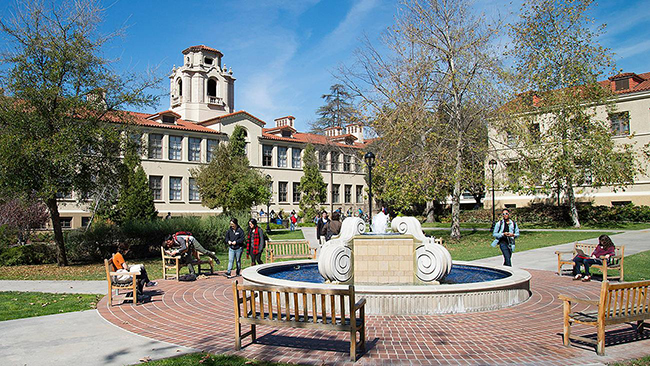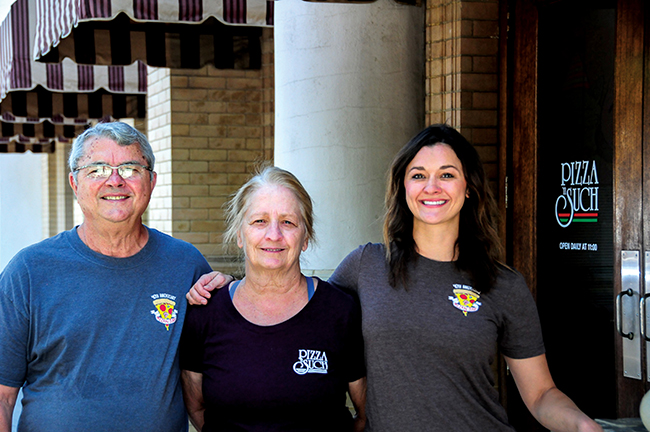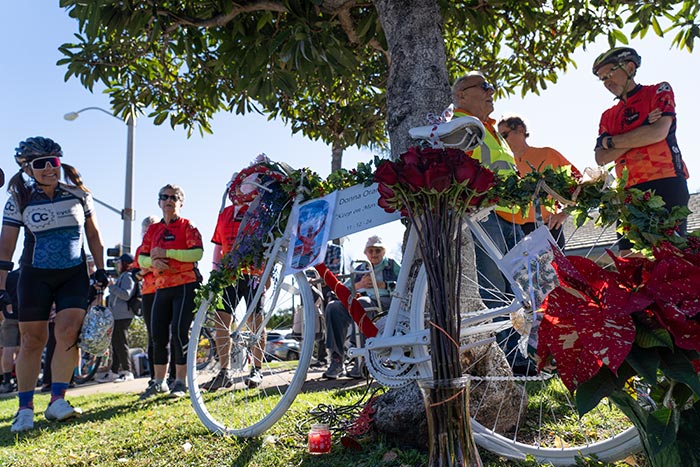Volunteers count the homeless, one person at a time
It was 9 p.m., and a Kia carefully crept through half-empty parking lots. The three occupants—Lee Kane, Rachel Forester and her mother, Lynn Forester—kept their eyes peeled for any signs of life or movement.
They were volunteers for the Claremont’s annual Homeless Count, a three-day countywide event where teams of three or four do a visual count of how many homeless people reside in their area. The count is vital in enhancing homeless services in the county, according to Claremont Management Analyst Viola Van.
Roughly 40 volunteers met at the Joslyn Center on Tuesday night, signing waivers and watching an instructional video on how to properly conduct the count.
The volunteers ranged from people in their late 20s and early 30s to seniors. The younger Ms. Forester said she usually brings her two children to city events, and they wanted to come with her tonight.
She declined. “This was past their bedtime,” she said.
The count is part of larger data collecting project done by the Los Angeles Homeless Services Authority (LAHSA), which will be used to pinpoint how and where to help the homeless. LAHSA notes that this particular count is the largest homeless census in the United States.
According to LAHSA, the total number of homeless people in LA County in 2018 was 52,765. This was actually a decrease from 2017’s total of 55,048—the first decrease in four years.
While this means that homeless initiatives are starting to work, LAHSA says the problems that drive people to homelessness still persist, including rising rents and a lack of affordable housing. According to LAHSA, the median rent in LA County has increased by 32 percent since 2000, while the median renter’s household income has decreased by three percent in that same time span.
They estimate that LA County alone needs more than 565,000 new affordable housing units for low-income renters. Of the over 9,000 people experiencing homelessness for the first time in 2018, 46 percent said it was due to loss of employment or other financial reasons, LAHSA said.
According to the city, there were 19 homeless people in Claremont as of 2017—two who live in cars, three who live on the street, two in makeshift shelters and 12 in emergency shelters.
The city says it has done its part to combat homelessness in the area. The Claremont Homeless Advocacy Program (CHAP) has been a model program, and the city passed a comprehensive homeless services plan in 2018, mapping out current strategies and goals for the future.
The volunteers at the Joslyn Center were divvied up into nine different teams—a driver, a navigator with a map of their specific area, and a counter who tallied the number of homeless found.
They were instructed to never leave their cars or engage with the homeless; privacy and security were key. The types of places to look included public parking lots, under freeway overpasses, in alleyways and around dumpsters.
They were given flashlights, reflector vests and a clipboard to tally the number of homeless they found. The tally sheet was separated into several groups—children under 17, young adults aged 18-24, adults 24 or over and families of two or more.
On Tuesday, Ms. Kane was the driver, Rachel Forester was the navigator and her mother Lynn kept tally. They were given a large swath of south Claremont—through the industrial center around Arrow Highway and Wharton Drive and down to Auto Center Drive.
Ms. Kane said she drove around the same area during last year’s count, and found one pickup truck with a camper shell that showed telltale signs of being turned into a makeshift home.
As the car drove slowly behind buildings and through parking lots, the volunteers put themselves in a homeless person’s shoes. As they passed by a secluded corner covered by bushes, Lynn Forester remarked, “If I were to sleep here, I’d sleep in that corner.”
But much of the area was empty. Cars in parking lots were unoccupied, and places that seemed out-of-the-way enough to be a perfect place to make a shelter for the night were barren. Many areas that would seem like an ideal place to sleep—tight alleyways, areas deep within city parks and tiny plots of land between buildings and the freeway—were inaccessible by car.
Even a quick drive through Oak Park Cemetery netted no people—no living people, anyway.
Around 9:45 p.m., near the KGI student housing construction site at Watson Drive and Bucknell Avenue, the crew spotted something. Two people, silhouetted in the darkness, slowly pushing full shopping carts through a parking lot.
Lynn Forester checked her clipboard. Two adults, aged 24 or older.
By 10:30 p.m., the crew returned to the Joslyn Center and turned in their work. The data will be used to get a clearer picture of the county’s homeless population.
—Matthew Bramlett
news@claremont-courier.com











0 Comments